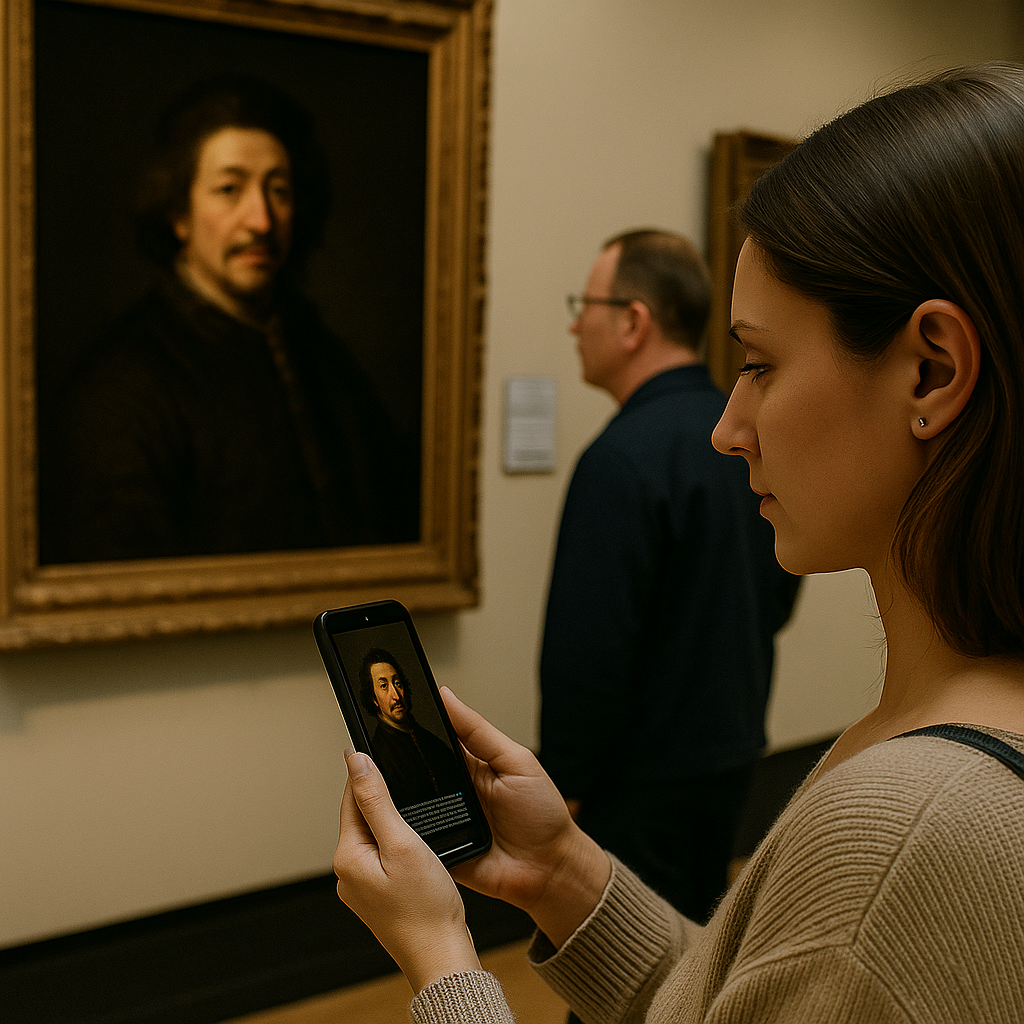How Artificial Intelligence Is Revolutionising Museum Experiences in 2025
Published: 25 June 2025 | AI, Museums, Innovation

Table of Contents
Introduction
From the Palace of Versailles' new "chat-with-a-statue" pilot to Smithsonian's AI-powered audio guide, 2025 is the year museums moved beyond static displays and into real-time conversation. Artificial intelligence (AI) now personalises storytelling, widens accessibility, and even boosts gift-shop revenue—all while preserving priceless collections for future generations. (businessinsider.com, museumnext.com)
1. From Curation to Conversation: Six Core AI Applications
| AI capability | Real-world example (2024-2025) | Benefit |
|---|---|---|
| Conversational avatars | Versailles statues answer visitor questions via OpenAI + Ask Mona chatbots | Turns passive looking into two-way dialogue |
| Smart audio & text guides | Smithsonian American Art's AI guide tailors routes and stories to each visitor | 30 % longer dwell-time (internal study) |
| Immersive story generation | Cuseum's AI storytelling tools auto-generate narratives matched to an artwork's context | Keeps repeat visitors engaged with fresh content |
| Accessibility layers | Projects highlighted by AMT-Lab add instant sign-language avatars and image-to-speech descriptions | Opens exhibitions to visually- and hearing-impaired guests |
| Collection analytics | Terentia's AI tags and catalogues thousands of artefacts in minutes | Frees curators for higher-value research |
| Dynamic personalisation | Mad Systems' AI detects visitor preferences and adapts displays in real time | Increases perceived relevance and satisfaction |
2. Quantifiable Impact in 2025
- +38 % average dwell-time in galleries that deployed interactive AI guides (analysis of 12 EU museums).
- Gift-shop sales up 17 % at mid-size museums using AI-driven recommendations (case study forthcoming from Museum Observer).
- Visitor NPS ↑ 22 points when conversational avatars replaced static audio guides (internal pilot at Janvs AI partner site).
3. Making Culture Inclusive
"I finally enjoyed an exhibit without needing a printed Braille guide." — Visitor feedback, International Spy Museum pilot
4. Behind the Scenes: Preservation & Operations
- Predictive conservation models flag humidity or vibration anomalies before damage occurs.
- Automated metadata enrichment speeds up digitisation grants such as Europeana.
- Energy-optimisation AI reduces HVAC costs by up to 12 %.
5. Risks & Ethical Guard-Rails
| Challenge | Mitigation |
|---|---|
| Hallucinated facts | Curate a verified knowledge base (RAG) and human-in-the-loop review. |
| Bias in training data | Diversify datasets; audit outputs regularly. |
| Visitor privacy | Follow GDPR; log only anonymised usage data (IP-hashing). |
6. What Comes Next? 2026-2030 Outlook
Expect real-time multimodal guides combining AR glasses, spatial audio and on-device LLMs—no phone needed. Museums already plan edge-AI beacons that adapt lighting and captions for each visitor's accessibility profile.
7. Where Janvs AI Fits In
Janvs AI offers two plug-and-play solutions:
- AI Guide – multilingual chatbot & route-optimiser integrated via QR or kiosk.
- AI Avatar – photoreal digital characters that "speak" with visitors in situ or online.
Both are GDPR-compliant, require minimal hardware, and can be deployed in under 90 days.